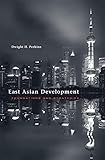East Asian Development : Foundations and Strategies / Dwight H. Perkins.
Material type: TextSeries: The Edwin O. Reischauer Lectures ; 26Publisher: Cambridge, MA : Harvard University Press, [2013]Copyright date: ©2013Description: 1 online resource (221 p.) : 6 graphs, 11 tablesContent type:
TextSeries: The Edwin O. Reischauer Lectures ; 26Publisher: Cambridge, MA : Harvard University Press, [2013]Copyright date: ©2013Description: 1 online resource (221 p.) : 6 graphs, 11 tablesContent type: - 9780674725300
- 9780674726130
- 338.95
- online - DeGruyter
- Issued also in print.
| Item type | Current library | Call number | URL | Status | Notes | Barcode | |
|---|---|---|---|---|---|---|---|
 eBook
eBook
|
Biblioteca "Angelicum" Pont. Univ. S.Tommaso d'Aquino Nuvola online | online - DeGruyter (Browse shelf(Opens below)) | Online access | Not for loan (Accesso limitato) | Accesso per gli utenti autorizzati / Access for authorized users | (dgr)9780674726130 |
Frontmatter -- Contents -- Introduction -- 1. The Historical Foundations of East Asian Development -- 2. Understanding East Asian Growth -- 3. Government Intervention versus Laissez-Faire in Northeast Asia -- 4. Successes and Failures in Southeast Asia -- 5. From Command to Market Economy in China and Vietnam -- 6. The End of High Growth Rates -- Notes -- Acknowledgments -- Index
restricted access online access with authorization star
http://purl.org/coar/access_right/c_16ec
In the early 1960s fewer than five percent of Japanese owned automobiles, China's per capita income was among the lowest in Asia, and living standards in rural South Korea put it among the world's poorest countries. Today, these are three of the most powerful economies on earth. Dwight Perkins draws on extensive experience in the region to explain how Asia sustained such rapid economic growth in the second half of the twentieth century. East Asian Development covers Japan, South Korea, Hong Kong, Singapore, and Taiwan, as well as Indonesia, Vietnam, Thailand, Malaysia, and China--a behemoth larger than the other economies combined. While the overall picture of Asian growth is positive, no single economic policy has been effective regionwide. Perkins uncovers why some initially egalitarian societies have ended up in very different places, with Japan, for example, maintaining a modest gap between rich and poor while China has become one of Asia's most unequal economies. With Korean and Japanese growth sluggish and China losing steam, Perkins asks whether this is a regional phenomenon or typical of all economies at this stage of development. His inquiry reminds us that the uncharted waters of China's vast economy make predictions speculative at best.
Issued also in print.
Mode of access: Internet via World Wide Web.
In English.
Description based on online resource; title from PDF title page (publisher's Web site, viewed 30. Aug 2021)


